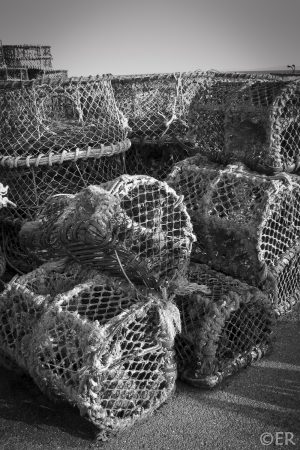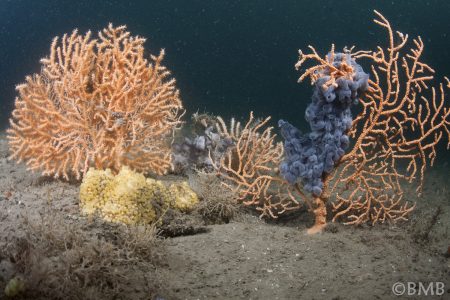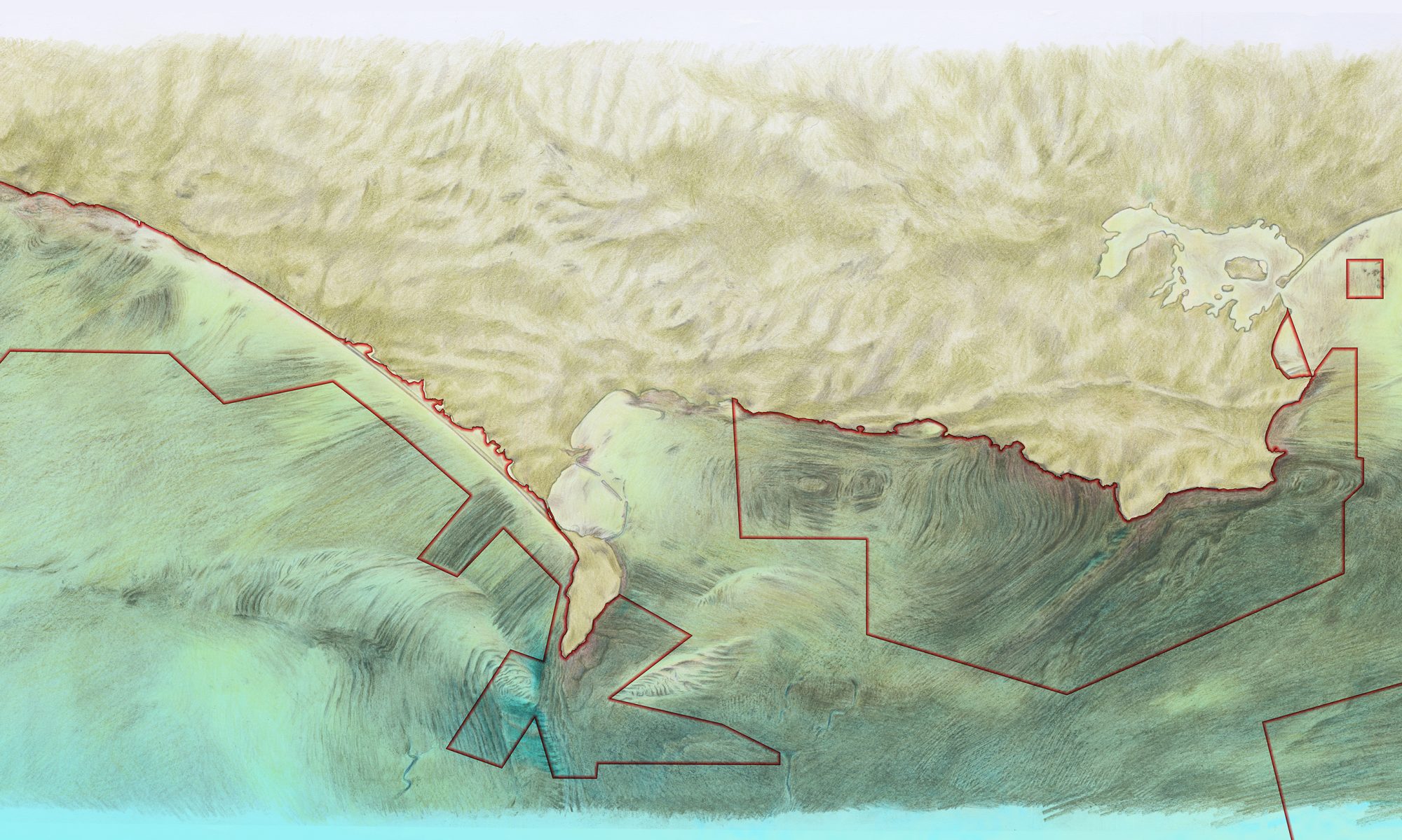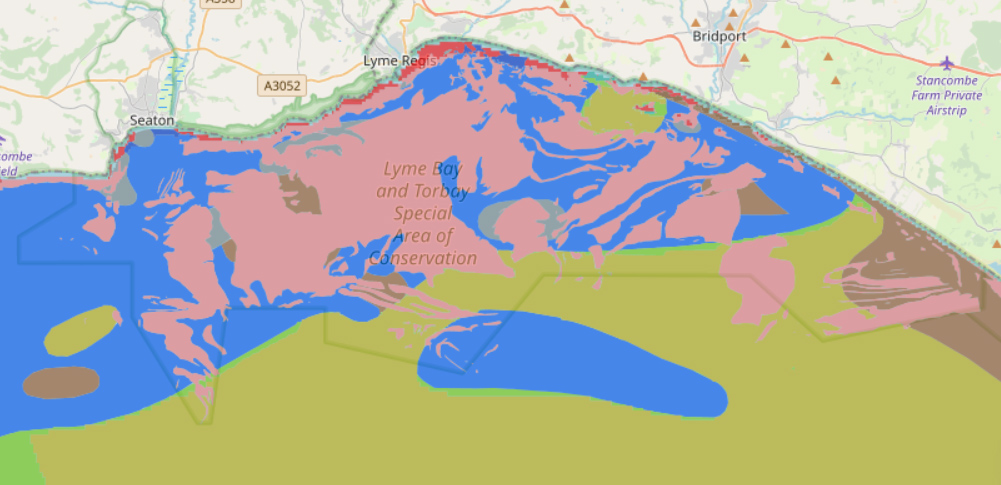Introduction
Full of colour and teeming with life, Lyme Bay’s reefs are key part of a Marine Protected Area (MPA) which covers over 310 sq km of seabed. The MPA protects places like rocky and stony reefs as well as vast fields of seafans, rare corals and abundant fish and shellfish populations.
Together, these make Lyme Bay Reefs hugely popular with local fishers, anglers and divers for either commercial or recreational activities. Marine biologists carry out important research and monitoring work within the MPA helping to ensure its management strategy has a positive effect.
Lyme Bay is home to a vast number of marine animals, not least the common lobster which has supported pot fisheries for centuries.
Protected Features
The Lyme Bay Reefs MPA has a number of specific protected habitats and species that are monitored to ensure they remain in good, healthy condition and are not adversely affected by human activities. These protected features are described below.




Seabed Features
Flanked by the East Devon and Dorset Jurassic Coast World Heritage Site, Lyme Bay forms part of one of the world’s most complete geological sequences spanning the Triassic, Jurassic and Cretaceous periods. The gradual, eastward slope of the rock layers means older rocks are visible in the west and younger rocks are more visible in the east.
Consequently Lyme Bay is a draw to geologists the world over. Not only do the rocks yield valuable information about our geological history but the area is renown for its fossils and the insight they provide to the evolution of life on Earth.
In fact, the science of palaeontology in England began after Mary Anning (1799-1847), a young girl from Lyme Regis, made the first confirmed discovery of a complete fossil ichthyosaur in Blue Lias rocks on Charmouth Beach. The World Heritage Site designation recognises the part played by this region in the development of palaeontology as a science and the area’s high value as a source of fossils. Fossil hunting continues as a popular pastime along the coastline and lucky divers may even find fossilised remains further out to sea.
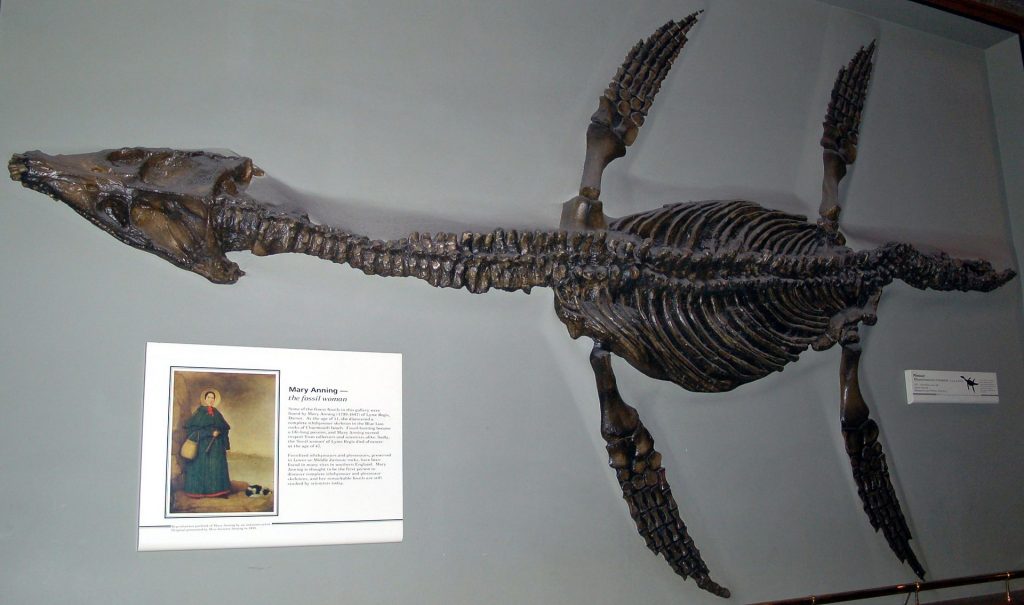
(Image credit Niki Odolphie, Creative Commons license)
The first five minutes of ‘Beachcombers’ from 1975 portrays the work of Barney Hansford, a fossil collector from Charmouth. The program can be viewed HERE.
The Dorset Integrated Seabed survey (DorIS) mapped the Dorset seabed using sonar technology. This gave accurate information about the local seabed features.
On the map you can explore the seabed features within the MPA boundary and take a look at other incredible undersea formations around the Dorset coast. If using a touch screen, use two fingers to zoom and scroll.
Seabed maps showing the different rocks and sediments in Lyme Bay based on available survey data can be viewed via the European Marine Observation and Data Network.
The underwater geology in Lyme Bay is highly varied. A mix of limestone, shales, clays and sandstones is found throughout the area. In many parts of the bay, elevated areas of seabed form the rocky reefs described above. Rare chalk reefs and submerged sea cliffs provide homes to a wide diversity of life.
Where the rocks do not form reefs they are covered often by a thin layer of mud, sand or gravel, rarely more than half a metre thick. These sediments may shift with tides and currents or following storm events, sometimes revealing the bare rock beneath or at other times covering low-lying rocky areas. These changing sedimentary patterns all influence the species and communities that can live in an area at any given time.
Lyme Bay’s varied and diverse seabed is home to a myriad of plants and animals, all competing for space, food and mates. Strong tides and and different seasons cause continual change in the wildlife found in the Bay throughout the year.
Image: Lin Baldock
Habitats and species
Lyme Bay’s reefs are havens for marine life. The MPA supports over 500 different marine species with very high numbers of sponges and corals. Plankton-rich water and the bay’s situation at the eastern extremity of many south-western species’ range both contribute to the area’s rich tapestry of life.
Commercial fish and shellfish such as mackerel, herring, bass, pollack, black bream, cod, lobster and crab are plentiful. Harbour porpoises, bottlenose, white-beaked and common dolphins and long-finned pilot whales are known to visit the waters, as are basking sharks during summer months. Without the productive reefs on the seafloor, few of these species could thrive in the way they do.
Did you know we have colourful corals in UK seas? Lyme Bay is one of only five areas in the British Isles where the sunset cup coral, Leptopsammia pruvoti (a hard coral) is known to occur. The Bay’s undersea communities also include vast numbers of the nationally important pink sea fan, Eunicella verrucosa.
The galleries below provide a glimpse into life on the seabed in Lyme Bay whilst the word cloud provides links to some of the more commonly recorded species inside the MPA.
Pink seafan meadows
ROLL over each image to find out more. CLICK on each image to see a larger version. ESC to return to the main screen.
TAP each image ONCE to find out more, TWICE to see a larger version. Tap off the image to return to the main screen.
return to the main screen.
Lyme Bay’s reefs are considered to be a ‘hotspot’ for marine life, supporting some of the most biologically diverse reef communities in England. Two basic types of rocky reef exist: infralittoral (shallow) and circalittoral (deeper). These names refer to the communities that live on the reefs, which are dictated in the large part by the amount of light able to penetrate the water to the seabed.
Infralittoral reefs are characterised by kelp or other algae.
Circalittoral reefs are made up mainly of animal life, like sponges, corals, anemones, sea squirts and others.
Lyme Bay is essentially a mosaic of rocky reefs, stony reefs (made up of stable boulders and cobbles) and areas of mud, sand or gravel in between. This complex mix of habitats is unique in the region. Below we take a look at some of the life on Lyme Bay’s reefs and the surrounding seabed.
Stony reefs
ROLL over each image to find out more. CLICK on each image to see a larger version. ESC to return to the main screen.
TAP each image ONCE to find out more, TWICE to see a larger version. Tap off the image to return to the main screen.
return to the main screen.
Rocky reefs
ROLL over each image to find out more. CLICK on each image to see a larger version. ESC to return to the main screen.
TAP each image ONCE to find out more, TWICE to see a larger version. Tap off the image to return to the main screen.
return to the main screen.
Open seabed
ROLL over each image to find out more. CLICK on each image to see a larger version. ESC to return to the main screen.
TAP each image ONCE to find out more, TWICE to see a larger version. Tap off the image to return to the main screen.
return to the main screen.
The abundant wildlife within Lyme Bay has made it a prime fishing ground for generations. Today, with intensifying pressure on the marine environment, the management of fisheries and other activities in Lyme Bay is key to ensuring the future of both people and its marine life.
The MPA covering Lyme Bay is a fine example of successful management measures leading to recovery of natural habitats and improving fisheries.
Image: Emma Rance
People and management
The fishing villages of Beer in Devon and Lyme in Dorset are listed in the Domesday Book, illustrating the long-standing value of the bay’s marine wildlife to mankind over the last millennium at the very least.
Historically, fishermen would have used pots, traps, set nets, drift nets, seine nets and/or hand lines to catch fish from the bay before the advent of towed bottom gears and their inevitable impact on the very habitats that create such productivity in the first instance.
Bottom-trawling ceased in a large portion of the bay in 2008.
Today, many local commercial fishers use pots and traps to fish for shellfish like crabs, lobsters, whelks and cuttlefish. Hand-diving for scallops is on the increase in the bay due to the protection afforded by the Inshore Fisheries and Conservation Agencies’ (IFCAs) spatial closure measures for scallop dredging. Seasonal use of set nets takes place within and outside the MPA to catch plaice, sole, rays, monkfish and black bream. Fish species including plaice, bass, pollack and bream attract both recreational sea anglers and commercial fishers.
As a result of IFCA regulations, tidal restrictions and local history, the area’s fishing fleet is characterised by small-scale fishing vessels under 10m long with the exception of just two vessels.
Designation as an MPA is not just helping to improve and maintain fisheries within Lyme Bay. Recreational sea anglers and divers enjoy greater value from the site and its protected areas, reporting a greater diversity and abundance of fish and other species.
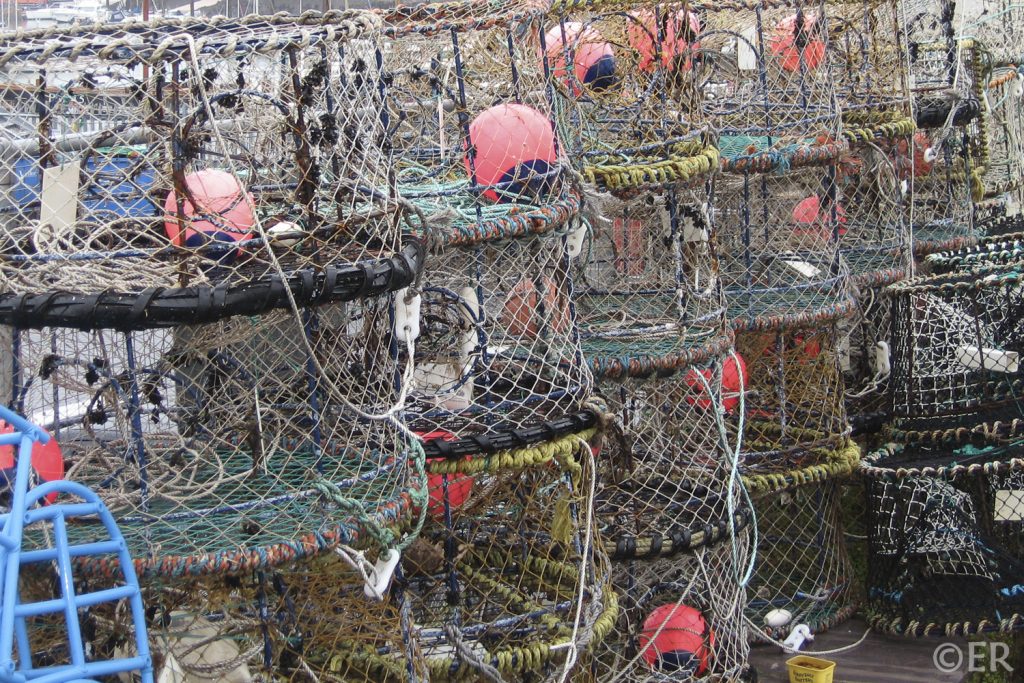
This video from the South Devon and Channel Shellfishermen provides a great insight to the Lyme Bay lobster fishery from David Sales. David was at the forefront of the campaign to designate Lyme Bay as a marine reserve. He was also awarded the Churchill fellowship for his work on lobsters and how they should be measured in UK fisheries to improve management.
This album, courtesy of the South Devon and Channel Shellfishermen shows images from David Sales and his life spent fishing the Dorset coast.
Aubrey Banfield is a Lyme Bay pot fisherman, catching brown crab and lobster for a living.
These images by Dorset-based photographer Saeed Rashid show a typical day at sea for Aubrey as he goes about retrieving and setting his pots.
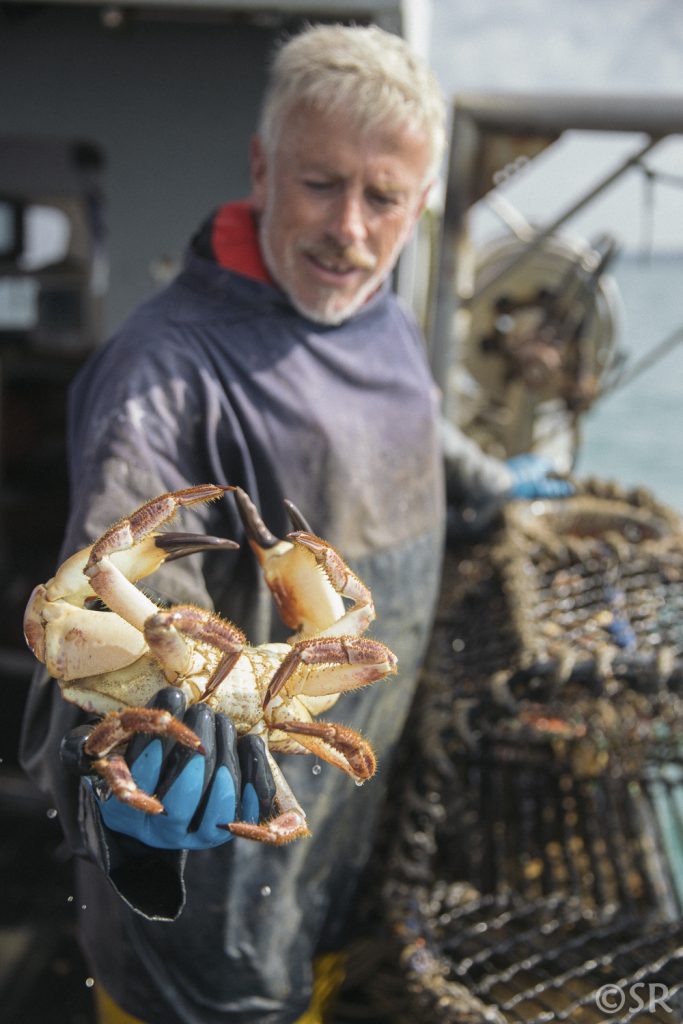
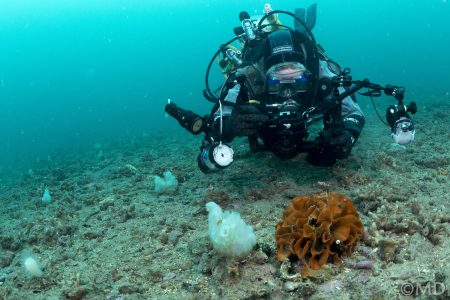
In addition to shipwrecks within the Bay, the important species that the site supports such as pink seafans, sunset cup corals and colourful reefs attract a large number of divers each year. Marine mammals such as dolphins and harbour porpoises and nationally scarce seabird species are found within the site and also attract wildlife watchers to the region.
Valuable assets
The value of diving and other leisure activities, like sea angling and wildlife watching, was estimated as over £3.9 million inside Lyme Bay’s closed fishing area in 2008. That amounted to 51 charter boat operators and ten dive businesses, not to mention the benefits to associated businesses such as hotel / B&B accommodation, restaurants, cafes and shops.
Lyme Bay’s marine life also provides a social value, as it forms part of the area’s cultural heritage. Several local events, incorporating arts, crafts, music, food and education are associated with marine life and people’s livelihoods. These include ‘Marine Week’ as well as numerous visitor centres such as the Charmouth Heritage Coast Centre with a marine focus. All these events bring valuable income and employment to the local area.
The fish and shellfish fisheries are well-established within Lyme Bay. In 2015 they were valued at around £1.7 million and supported approximately 45 commercial fishing vessels landing over 1,000 tonnes of fish and shellfish within the Lyme Bay area each year.
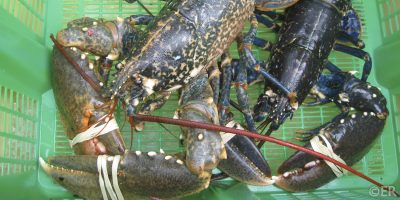
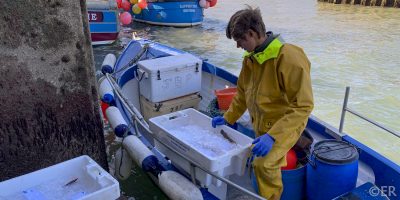
Sam Shuker is a trainee commercial scallop fisherman working out of Lyme Bay. Sam plans to train as a scallop diver and he understands the importance of the Marine Protected Area for the future of his local fisheries.
This short film showcases Sam’s fishing experiences in Lyme Bay and is part of a short series about Dorset’s fishing and aquaculture industry. Other films in the collection can be viewed on the Dorset Coast Forum’s webpage.
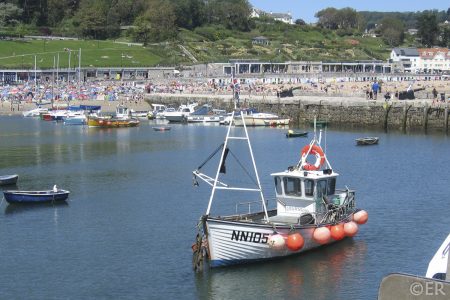
Well-being
A report by Plymouth and Exeter Universities on the impact of the Lyme Bay Fisheries and Conservation Reserve on ecosystem services and human well-being showed high job and income satisfaction for the static gear fishermen actively involved in the management of the MPA. Both these aspects of well-being have increased since new management measures began to be implemented.
Perceptions of the reserve were less positive amongst mobile gear fishers displaced from the MPA, although job and income satisfaction has steadily risen for this group of local sea users according to the report.
The full report is available HERE.
Management of Lyme Bay
The Lyme Bay reefs were recognised as a biodiversity hotspot by marine biologists in 1991. Their abundance of life makes them productive fishing grounds for species like scallops, brown crabs, lobsters, cuttlefish, whelks and sole.
Concerns about the impacts of scallop dredging and bottom trawling to the reefs meant 60 square miles of seabed was closed to towed gears in 2008. The closed area increased to 90 square miles in 2010. The closure is enforced jointly between two Inshore Fisheries and Conservation Agencies (IFCAs) – The Devon and Severn IFCA and the Southern IFCA.
The Lyme Bay and Torbay Special Area of Conservation (SAC) was designated under the EU Habitats Directive in 2010. The SAC is comprised of two separate areas – the reefs of central Lyme Bay and the Torbay coastal area.
To recognise the social and economic value of the MPA, the Lyme Bay Fisheries and Conservation Reserve Working Group was formed in 2011, helped by the Blue Marine Foundation (BLUE). The group brings together local fishers, scientists and managers and has established a multi-use MPA with sustainable, well-managed fishing practices and protection for important habitats and species. This group recognised the possible impacts of intensive or damaging fishing practices – by gathering and using their own evidence they agreed upon a set of voluntary measures by which the group’s fishers abide.
These responsible fishing practices have resulted in multiple benefits for the fishing communities in terms of increased yields and efficiencies as well as the development of the ‘Reserve Seafood Label’ which promotes responsibly sourced fish and shellfish from Lyme Bay.
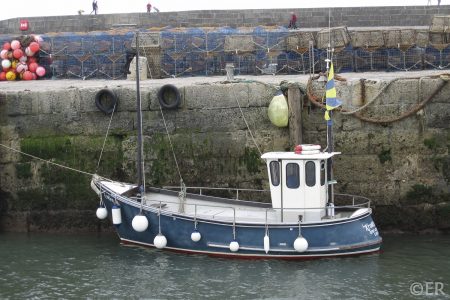
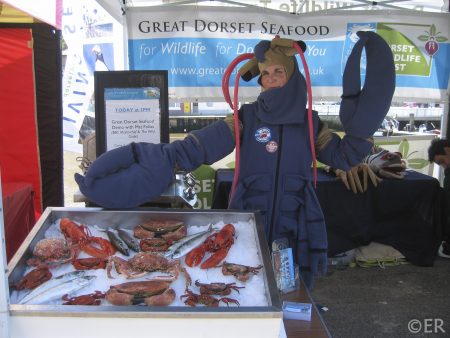
Management in a nutshell – DRAFT plans
Marine life within the MPA is subject to several fishing methods, each requiring a certain level of management to ensure the activities remain sustainable. Here we outline the measures currently in place within the MPA.
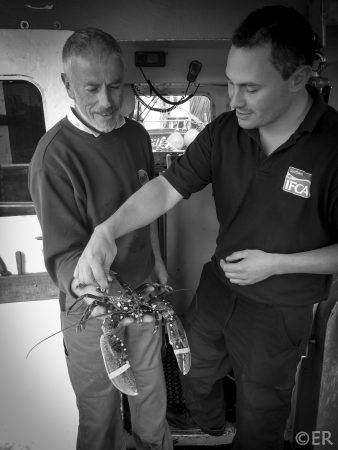
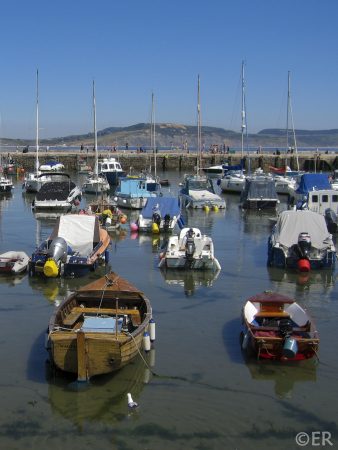
Pot and net fishing
Potters target species like crabs, lobster, cuttlefish and whelks whilst users of set nets may target plaice, sole, rays or bream. Voluntary management measures place limits on the number of pots and total length of nets which fishers may use inside the MPA. These measures are based on scientific evidence about sustainable levels of fishing within the MPA – studies funded through the Lyme Bay Fisheries and Conservation Reserve project. Southern IFCA byelaws and national and international laws also set out a series of minimum take sizes (MTS) with which all fishers must comply.
Management of fishing activities is rarely a static process and fisheries need to be subject to constant review. Southern IFCA regularly reviews potting management measures to decide whether changes are needed.
Sea angling
Lyme Bay and Torbay are frequented by recreational sea anglers both from the shore and from a mix of private and charter vessels. Anglers hope to catch a variety of species including pollack, bass, cod, plaice, rays, sharks and mackerel. Commercial angling also occurs for bass and pollack.
All sea anglers must comply with the MTS set out under Southern IFCA byelaws.
Scallop diving
The closure of Lyme Bay’s reefs to dredging and trawling means commercial fishermen have taken to scallop fishing by diving instead. This fishing method is highly selective and therefore kinder to the seabed habitats where the scallops live, allowing all the other species to continue to flourish.
All divers (recreational and commercial) must comply with the MTS set out under Southern IFCA byelaws and national law and with daily curfew restrictions on scallop fishing. Recreational divers are encouraged to gather only small quantities for personal consumption and are discouraged from taking crab, lobster and spiny lobster (crawfish).
For more detailed information on the fishing management within Lyme Bay, see the full management plans on the IFCA website.
Looking to the future
Overall, the story of Lyme Bay is one of continuing success and optimism. The last decade has seen a significant shift in how the site is used by fishers, with a clear move away from intense towed gear fishing and toward lower impact fishing methods.
Existing static-gear fishers (i.e. pots and set nets) have found a balance to their fishing intensity. By fishing in a sustainable manner they are experiencing greater yields and financial returns with each year that passes.
In 2018, the Government’s statutory conservation advisor, Natural England, assessed the condition of the Lyme Bay reefs. At that time they were determined to be in ‘unfavourable’ but ‘recovering’ condition. What this means is that whilst the reefs might not yet be back to their full natural potential (perhaps unsurprising following many years of bottom trawling) they are on the right path and continue to show improvement.
Natural England’s assessment therefore can be considered an endorsement of the progress being made under the present management plan.
The Lyme Bay reefs are of both national and international conservation importance and the site has been called the nation’s ‘flagship MPA’. The research carried out in Lyme Bay combined with the all-important community-led engagement programme has gained international recognition as an example of best-practice in MPA management.
The carefully considered approach to managing fishing practices in Lyme Bay serves as a template for what can be achieved for the future of sustainable fishing in the UK’s inshore waters. Such an approach could also happen outside protected areas, should stakeholders choose.
